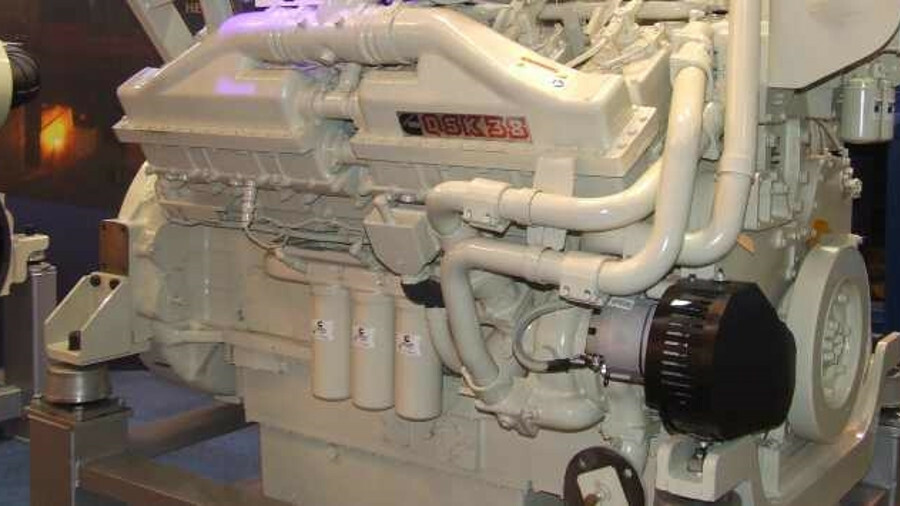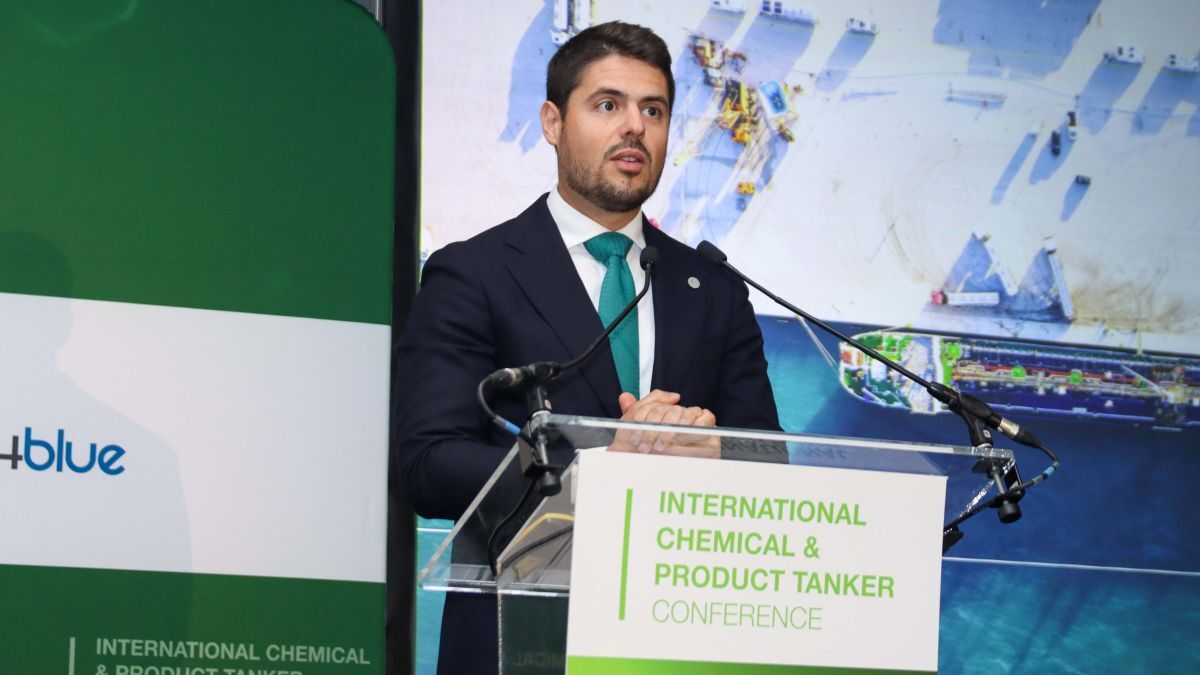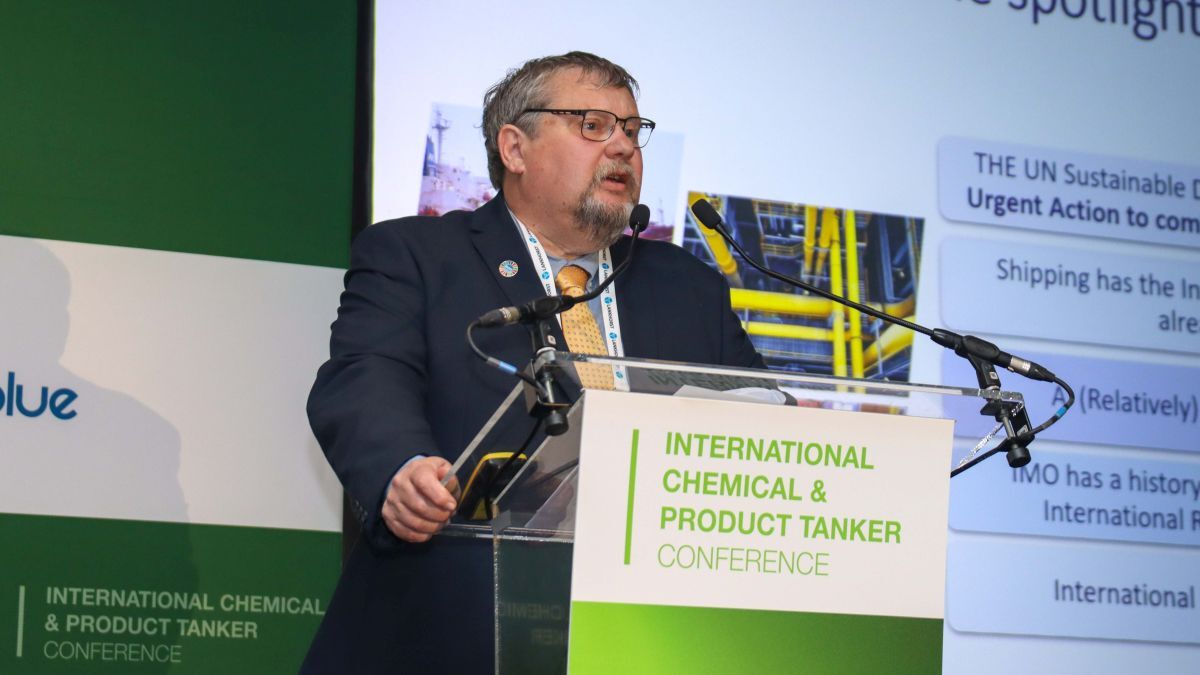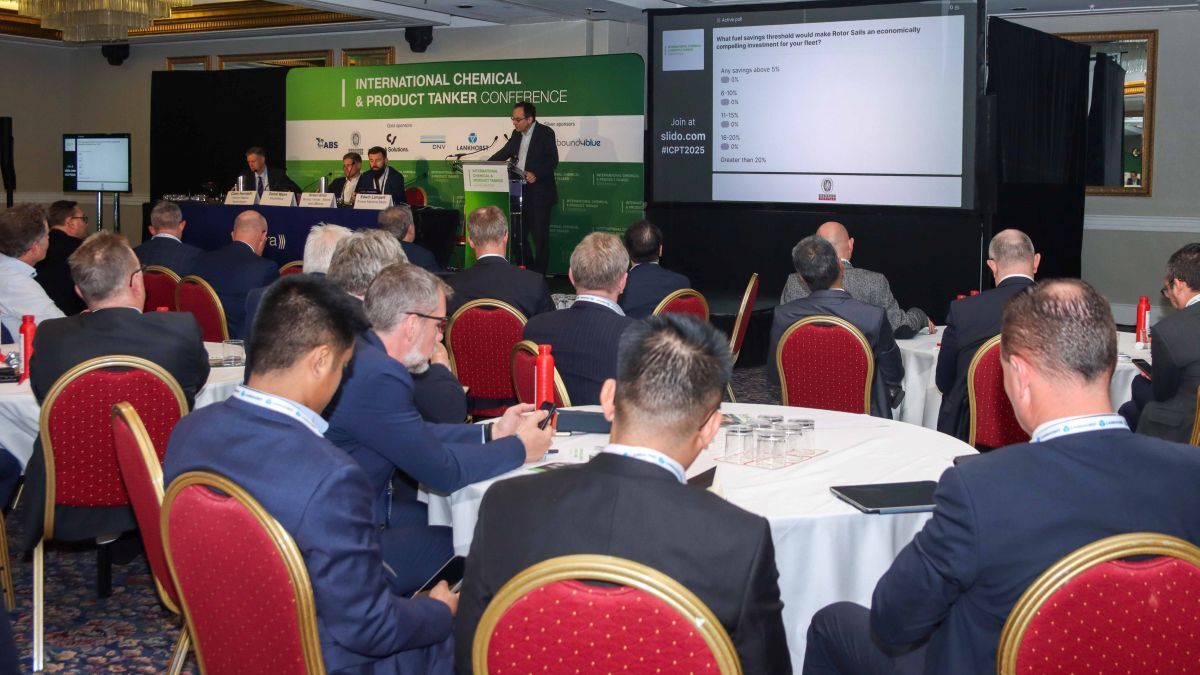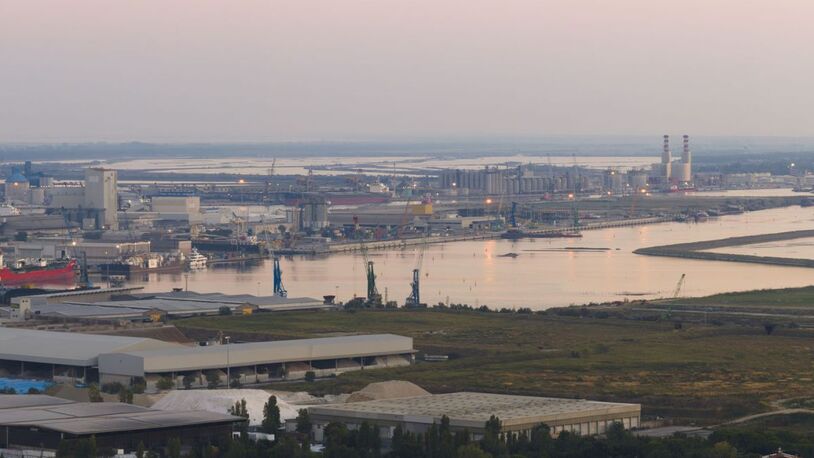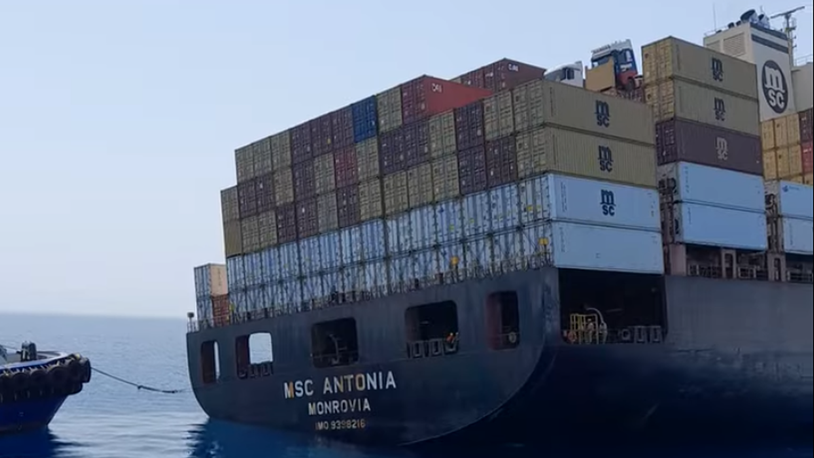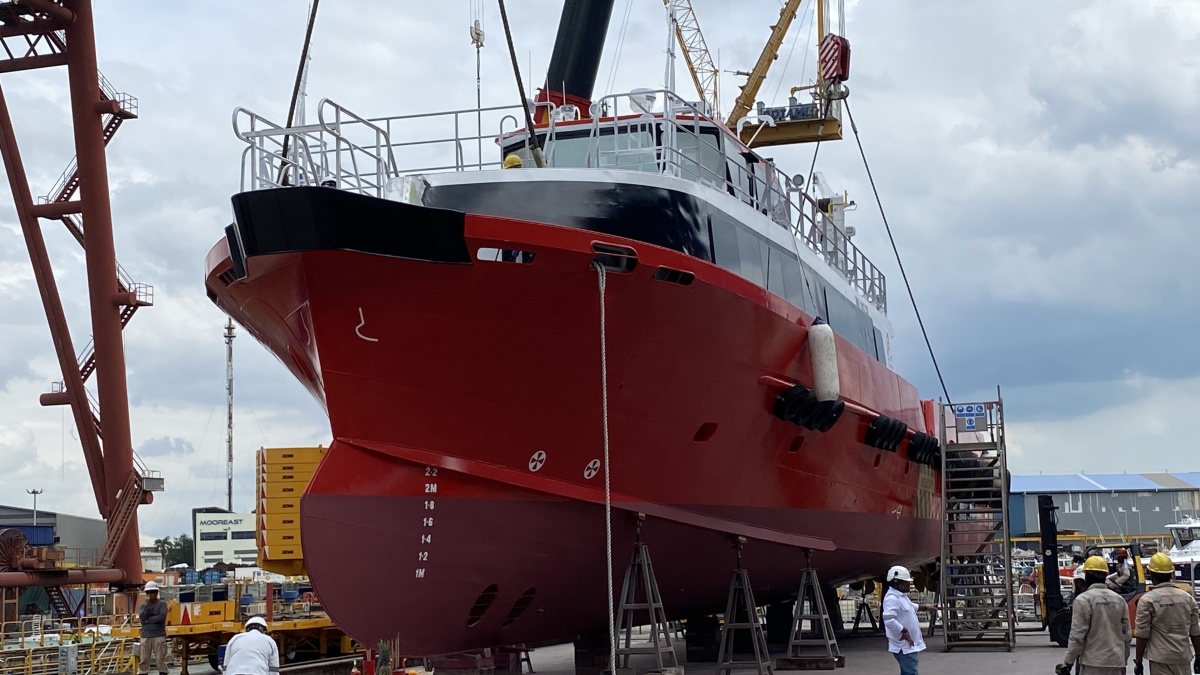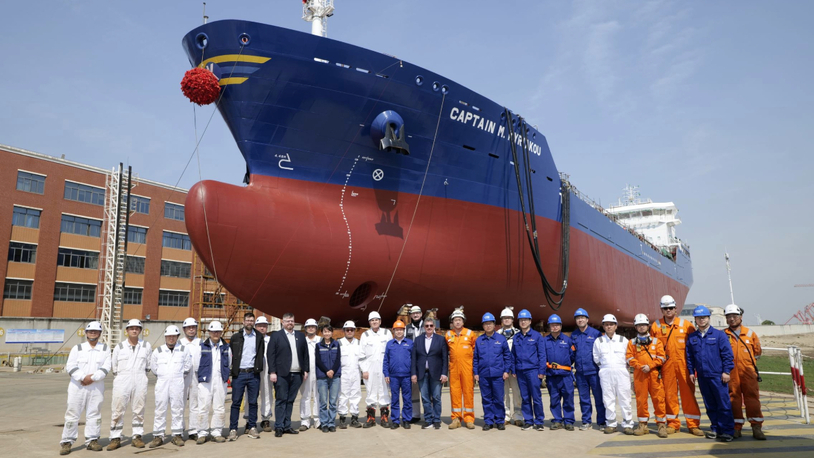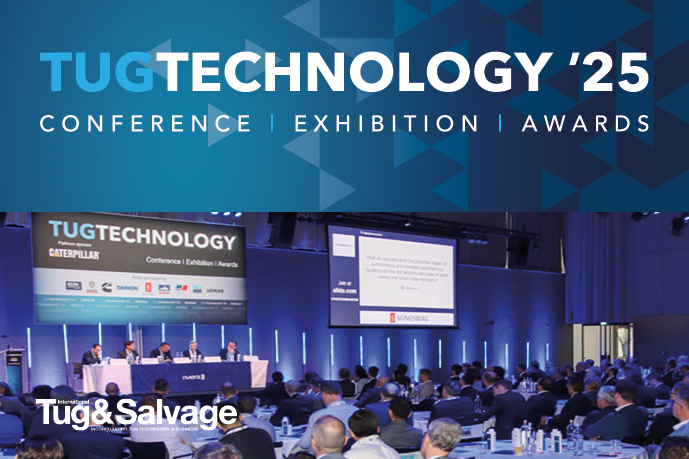Business Sectors
Events
Contents
Engines revealed to meet EPA Tier 4 requirements
Engine manufacturers have unveiled new engines that meet US Environmental Protection Agency’s Tier 4 standards on emissions
Engine manufacturers have reacted to the US government’s Environmental Protection Agency (EPA) requirements by introducing cleaner models for workboats, including tugs. These standards were introduced to minimise emissions of sulphur dioxide, nitrogen oxides and particulates from marine engines.
Cummins revealed its QSK38 Tier 4 marine engine, which can be paired with a selective catalytic reduction (SCR) system that removes NOx emissions. This is based on the QSK38 Tier 3 marine engine, which is a V-12 four-stroke diesel engine with turbocharger and aftercooler. It has a displacement of 38 litres and a high-pressure common rail fuel system.
The variable speed of QSK38-M1 model has a power output from 746 kW at 1,800 rpm up to 1,044 kW at 1,900 rpm. The fixed speed QSK38-DM1 is available in a series that has an output range of 984 kW at 1,500 rpm to 1,044 kW at 1,800 rpm. The cooling system on these engines includes two pumps and two loops and a mounted titanium plate heat exchanger. The air system includes a turbocharger and a mounted or a remote marine-grade air cleaner with a replaceable canister.
QSK38 engines have 24 V Quantum System electronics that monitor operating parameters and provide diagnostics and prognostics. Cummins said that, with the Tier 4 version of QSK38, there would be flexibility in the SCR arrangement and that this system comes with sensors for monitoring its performance. This enables the volume of urea that is injected into the SCR to neutralise the NOx emissions to be controlled, ensuring there is no waste.
Cummins executive director for global marine business Jim Schacht said in a statement that QSK38 Tier 4 will have “lower emissions and extended warranty coverage.” It will be available for installation on newbuild projects from 2019.
GE Transportation has developed a medium-speed engine that meets EPA Tier 4 and IMO Tier III requirements. It uses a non-urea solution to minimise emissions on workboats, including tugboats and offshore support vessels. GE senior global communications leader Amy Magee said these engines have been specified “into several articulating tug-barge projects because they fit the power node, footprint and design simplicity.”
She told Tug Technology & Business that Tier III GET marine engines were supplied for tug projects in central Europe, Russia, US and Turkey. Some of the vessel operators that have specified GET engines include Harvey Gulf, Basto Fosen, Weeks Marine, Crowley Maritime, Foss Young Brothers, Harley Marine and Reinauer Transportation.
She added that the first Tier III engines for the Chinese workboat market were recently commissioned by China Offshore Oil Engineering Corp with support of local distributor Yue On Shipping.
Tier 3 engines revealed
John Deere has introduced a new PowerTech engine to its range that meets EPA Tier 3 and IMO Tier II standards. The PowerTech 4045 SFM 85 engine was designed for high-speed leisure craft, patrol vessels and light-duty commercial vessels.
This is a 4.5 litre engine that can be configured to produce 205 kW at 2,600 rpm or 235 kW at 2,800 rpm. It uses a waste-gated turbocharger that provides high torque at low and middle rpm ranges, has replaceable cylinder liners, options for left- and right-hand oil filters, a low profile heat exchanger and water-cooled exhaust manifold. John Deere is seeking approval from ABS, Lloyd’s Register, DNV GL and Bureau Veritas for these engines.
Yanmar Marine has introduced a new generation of common rail diesel engines that meet EPA Tier 3 and EU’s Tier 2 emission standards. Yanmar 3JH40 will be its smallest inboard four-stroke engine that the manufacturer said could be installed on light duty commercial craft. Weighing 192 kg and with 1,642 litre displacement, the engine can be operated by either standard mechanical cable controls or the Yanmar VC10 electronic control system.
Related to this Story
Events
Maritime Environmental Protection Webinar Week
TUGTECHNOLOGY '25
Reefer container market outlook: Trade disruption, demand shifts & the role of technology
© 2024 Riviera Maritime Media Ltd.


